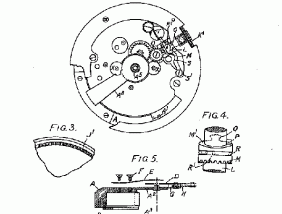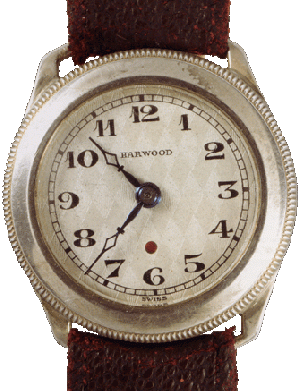Harwood

Harwood

The Bumper movement was invented by John Harwood, a watch repairer from Bolton, England, who took out a UK patent with his financial backer, Harry Cutts, on 7 July 1923, and obtained a corresponding Swiss patent on 16 October 1923.
The Harwood system used a pivoting weight which swung as the wearer moved, winding the mainspring. The ratchet mechanism wound the mainspring only when moving in one direction. The weight did not rotate a full 360°; spring bumpers limited its swing to about 180°, to encourage a back and forth motion. This early type of self-winding mechanism is now referred to as a 'hammer' or 'bumper'.
Like its 18th-century counterparts, Harwood's watch also had a problem with jerking because the brass weight hit too sharply against the banking pins as it pivoted. When fully wound, Harwood's watch would run for 12 hours autonomously. It did not have a conventional stem winder, so the hands were moved manually by rotating a bezel around the face of the watch. The watches were first produced with the help of Swiss watch manufacturer Fortis and went on sale in 1928. 30,000 were made before the Harwood Self-Winding Watch Company collapsed in 1931 in the Great Depression.
